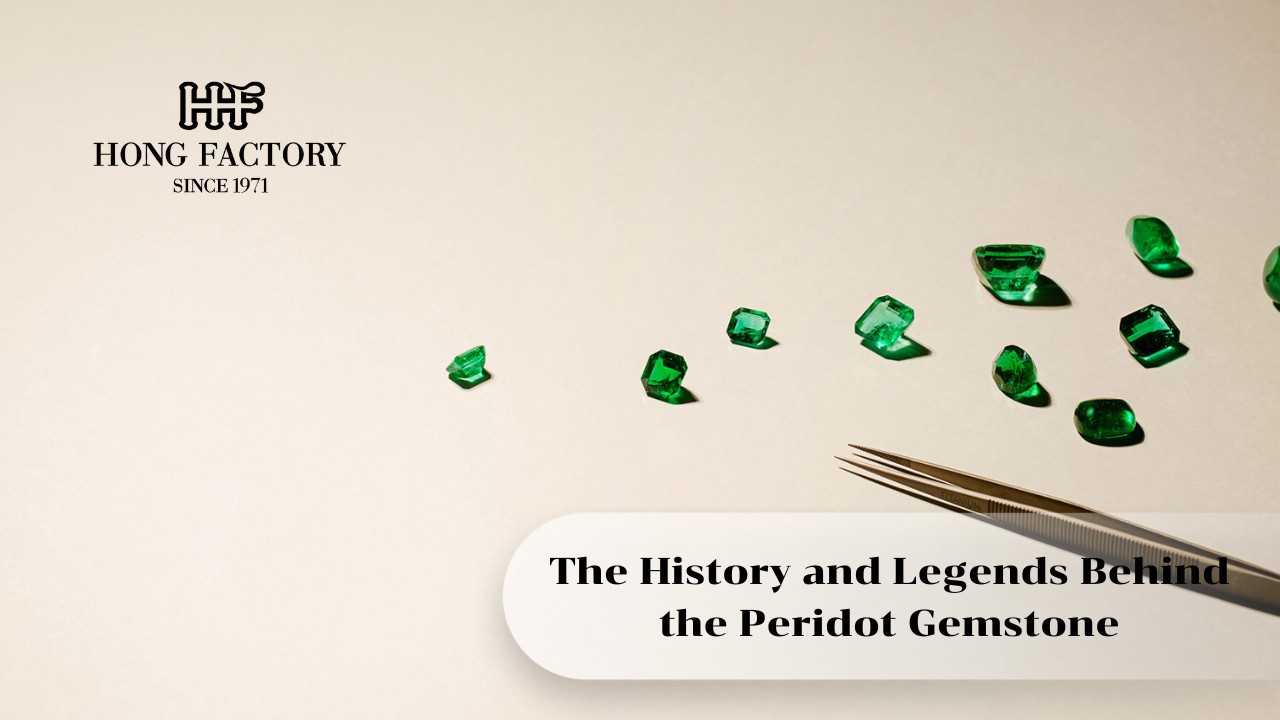
The History and Legends Behind the Peridot Gemstone
- by admin
For centuries, gemstones have held a special place in human history, symbolizing power, beauty, and spiritual meaning. Among these treasures, the Peridot Gemstone stands out for its radiant green hue and fascinating origin. Known as the “gem of the sun,” peridot has been cherished by ancient civilizations, adorned royalty, and carried rich legends that continue to captivate jewelry enthusiasts and historians alike. In this article, we uncover the origins, myths, and enduring allure of the peridot gemstone through time. Titanium earrings for sensitive ears
The Origins of the Peridot Gemstone

The Peridot Gemstone is one of the oldest known gemstones in human history. Formed deep within the Earth’s mantle, it reaches the surface through volcanic eruptions, giving it a fiery and elemental origin. Unlike many gemstones that come in various colors, peridot exists only in shades of green—from bright lime to deep olive—depending on its iron content.
Interestingly, peridot can also be found in meteorites, making it one of the few gems that exist both on Earth and beyond. These cosmic peridots, known as “pallasites,” have been discovered in rare meteorite fragments, symbolizing the gemstone’s celestial connection.
Peridot in Ancient Egypt: The Gem of the Sun
Peridot’s history can be traced back more than 3,500 years to ancient Egypt. The Egyptians called it the “gem of the sun” because they believed its golden-green glow came from the sun god Ra. They mined the gem extensively on the volcanic island of Zabargad (now St. John’s Island) in the Red Sea.
It was said that Egyptian miners worked at night because peridot’s bright color made it difficult to distinguish in daylight. Illuminated by the light of torches, they would extract the glowing stones under the stars. Cleopatra herself was believed to have adored peridot, often mistaking it for emeralds in her royal collection.
Peridot was also used as a protective talisman. Ancient Egyptians wore it to ward off evil spirits, enhance strength, and bring prosperity. The gem became a symbol of light overcoming darkness—a theme that still defines its spiritual significance today.
Peridot in Ancient Cultures and Mythology
Beyond Egypt, the Peridot Gemstone held importance across many cultures:
- Greek and Roman Civilizations: The Greeks associated peridot with the sun god Apollo and believed it brought vitality and clarity of mind. Romans, meanwhile, admired peridot for its ability to glow even under artificial light, calling it the “evening emerald.”
- Hawaiian Legends: In Hawaiian folklore, peridot represents the tears of Pele, the fiery goddess of volcanoes. These stories connect the gem’s formation to the Earth’s molten energy and creation.
- Biblical References: Peridot is believed to be one of the twelve gemstones that adorned the breastplate of Aaron, the High Priest of Israel, symbolizing divine light and spiritual purity.
Peridot in Medieval Europe
During the Middle Ages, peridot became a popular stone among clergy and royalty. European crusaders brought it from the Middle East to adorn churches and cathedrals. The stone was often set into religious objects, as it was believed to dispel fear, calm anger, and promote harmony.
In medieval times, peridot was also seen as a cure for melancholy and insomnia. It was thought that placing the gemstone near one’s heart could strengthen relationships and bring peace to troubled souls.
The Journey to Modern Times

The popularity of peridot continued through the centuries. In the 18th and 19th centuries, it became a favorite in Victorian jewelry, often paired with marcasite and silver for intricate, romantic designs. Today, peridot remains a beloved gemstone in both fine and fashion jewelry, valued for its distinctive glow and symbolic meaning.
Its primary sources now include Myanmar, Pakistan, China, and the United States (Arizona). Each region produces unique shades of green, but all share the same luminous beauty that defines this gemstone.
The Symbolism and Energy of Peridot
The spiritual and metaphysical associations of peridot have endured since ancient times. It is known as a stone of renewal, positivity, and emotional balance. In crystal healing, peridot is connected with the heart chakra, encouraging love, compassion, and forgiveness.
Its green color symbolizes growth, nature, and abundance. People often wear peridot jewelry to attract prosperity, dispel negativity, and restore inner peace. As the birthstone for August, it is also associated with good fortune and personal transformation.
Modern Appreciation for a Timeless Gem
In the modern era, peridots have gained new recognition among jewelry designers and collectors. Its natural brilliance complements both minimalist and statement designs. Peridot’s sustainable sourcing and affordability also make it a popular choice for eco-conscious buyers seeking both elegance and ethics.
Contemporary jewelers are reimagining peridot in innovative ways—from sleek silver rings to gold-accented earrings that highlight its warm, vibrant hue. Despite evolving trends, the gem’s historical charm continues to shine through every piece.
The Peridot Gemstone has traveled a long journey—from the volcanic mines of ancient Egypt to modern jewelry showcases around the world. Its legends of sunlight, protection, and transformation have made it more than just a gem; it’s a symbol of resilience and hope. Whether cherished for its history, spirituality, or unmatched glow, peridot remains one of the most captivating gemstones in existence—an eternal testament to nature’s brilliance and humanity’s enduring fascination with light.
For centuries, gemstones have held a special place in human history, symbolizing power, beauty, and spiritual meaning. Among these treasures, the Peridot Gemstone stands out for its radiant green hue and fascinating origin. Known as the “gem of the sun,” peridot has been cherished by ancient civilizations, adorned royalty, and carried rich legends that continue…